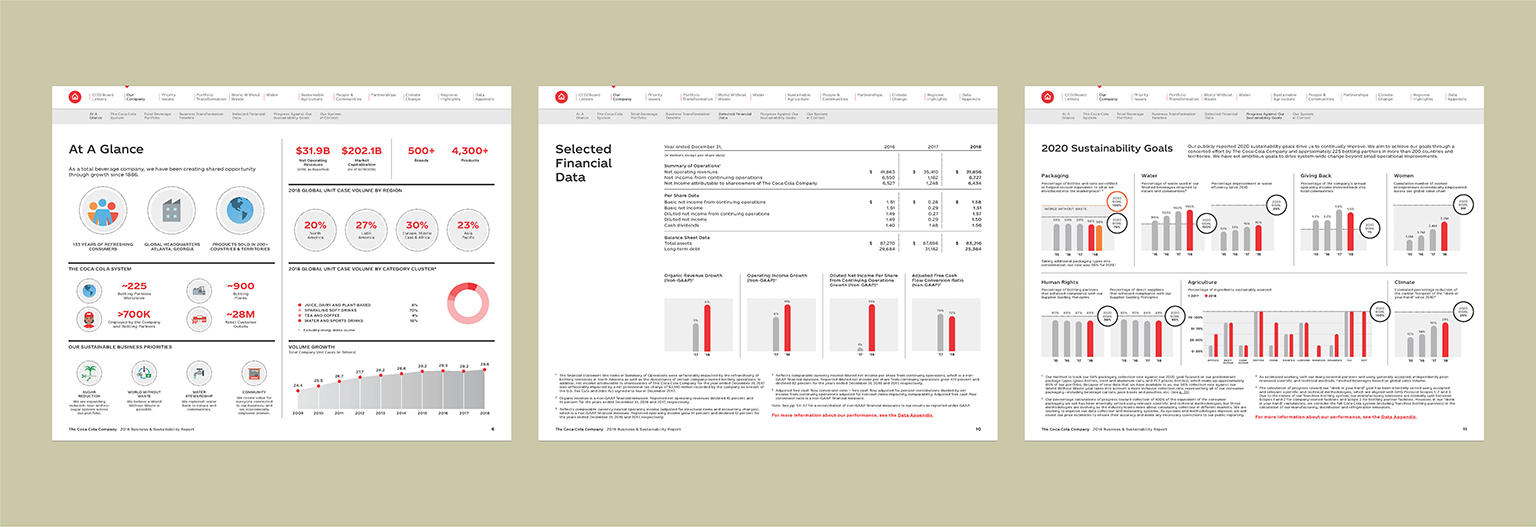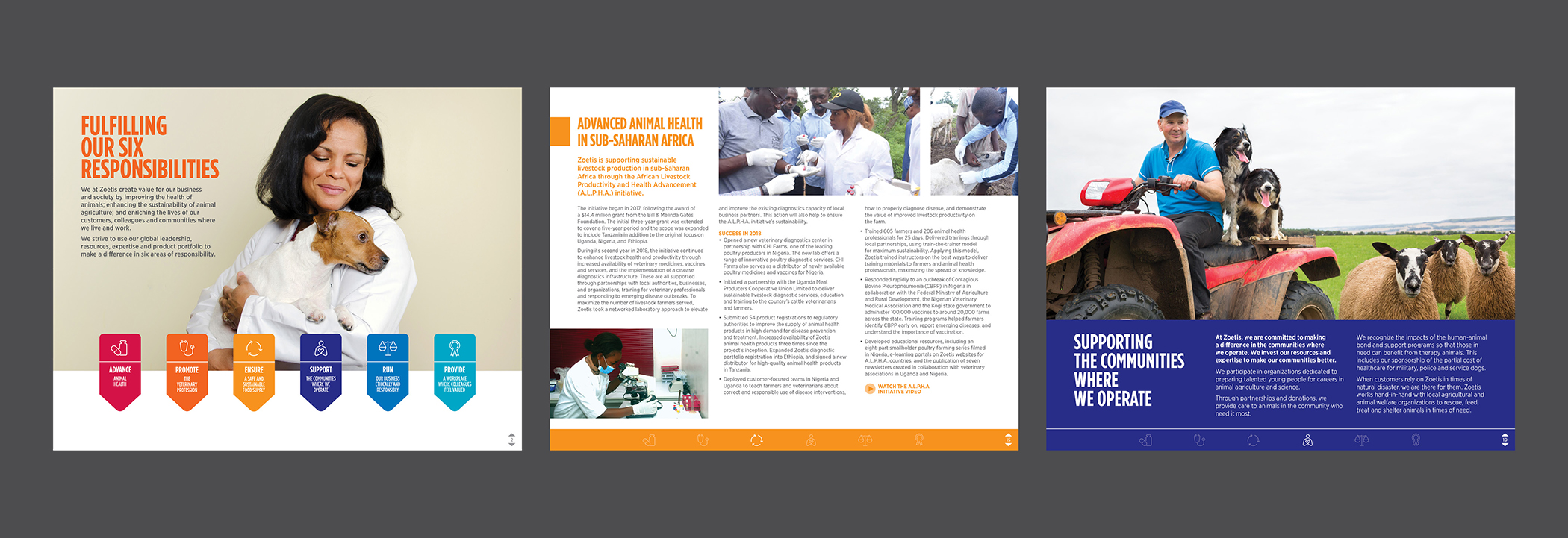The Soul of Your Report: Performance or Purpose?
Performance is the data, the numbers and the results.
Purpose is the why, the narrative, and the long-term view.
Here’s why your Sustainability, ESG, CSR, or Financial report needs to present both effectively.
Your company’s performance story is told through data, facts, KPIs, progress against goals and financial results. But companies who limit their Annual Financial, Sustainability, CSR or ESG reports to merely “numbers with a wrap” are missing a critical opportunity.
Beyond the data, your reports are corporate communications opportunities to put your best “purpose” forward, to position your brand, your ethos and your ongoing efforts as well as your results with investment pros, shareholders and the broader range of stakeholders, like your employees, community and customers. Here’s why both performance and purpose are important to your reporting efforts.

Performance — metrics, financials & KPIs
In the context of your organization’s financial goals, the annual report or 10-K is a check-in against targets of profits, earnings per share and other benchmarks of business wellbeing. Financial information is the most traditionally sought after and is highly regulated by the SEC for publicly traded companies. This extremely detailed document about an organization’s financial health is critically important to investment analysts, to the investing community, to the financial media — and, of course, to shareholders.
And financials aren’t the only numbers that are being increasingly called for in the yearly performance summing-up. More and more stakeholders look for frameworks that codify sustainability and ESG metrics as performance indicators and predictors of long-term company health (aka a solid investment). Depending on the type of business or industry, data around community impact, employee safety, carbon emission reductions, and waste can reveal much about company efforts.
Graham Kenny, managing director of a strategic management and performance planning consultancy, wrote in The Harvard Business Review that shareholders are “… looking for a holistic view, just as we are when visiting the doctor for a check-up. And to get that, we need more than the financial equivalents of blood pressure and temperature readings.”
Yes, the data tells a story — but it doesn’t tell the whole story.

Purpose — narrative, context and the ‘why’
As we noted in our Trends in Corporate Reporting whitepaper, the “purpose” of companies in society is increasingly under scrutiny, but there are not many opportunities to give context to organizational motivations, or to explain shifting priorities in the business landscape.
Your narrative is a great chance to tell a bigger story behind the financials and the ESG metrics. Why has your organization set the goals it’s set, what impact would it like to make — and how is it looking toward the future? How do the numbers fit into the bigger picture behind your brand, your philosophies and your long-term goals?
To do that to best effect, think about — and properly address — the audiences you serve:
- Identify and prioritize the stakeholders that are most important to you. Remember, your focus might change, depending on what your goals are.
- Know what you want each audience to take away and be specific. There will be overlap, but for each group select a key message.
- Set parameters for each “story”, so you don’t go beyond what your stakeholders can absorb.
- For each audience, use the appropriate storytelling format (case study, personal interest story, Q&A, interview) and delivery method (printed, PDF or web-native; video, photography, animation, etc.)
You might find that a single vehicle cannot effectively convey your messages to your diverse stakeholder groups. Leaders are considering a suite comprised of audience or content specific communications and use multiple channels — the corporate website, a microsite, topic specific reports or highlights, social campaigns or other communications vehicles.
Performance + purpose + professionals = an effective report
Of course, to get your message out most effectively, you could need the help of reporting strategy, storytelling, design, development and production pros. Did we mention that performing those tasks is our purpose?
Check out the award-winning and stakeholder-pleasing reports we’ve helped create — and get in touch if you need help with yours. info@ideasonpurpose.com